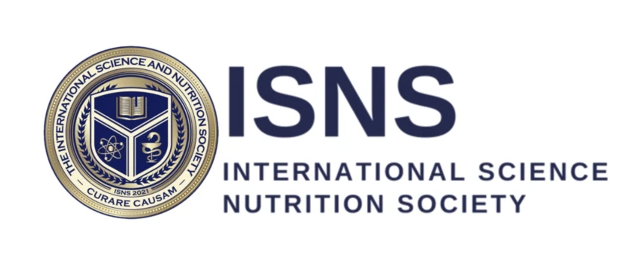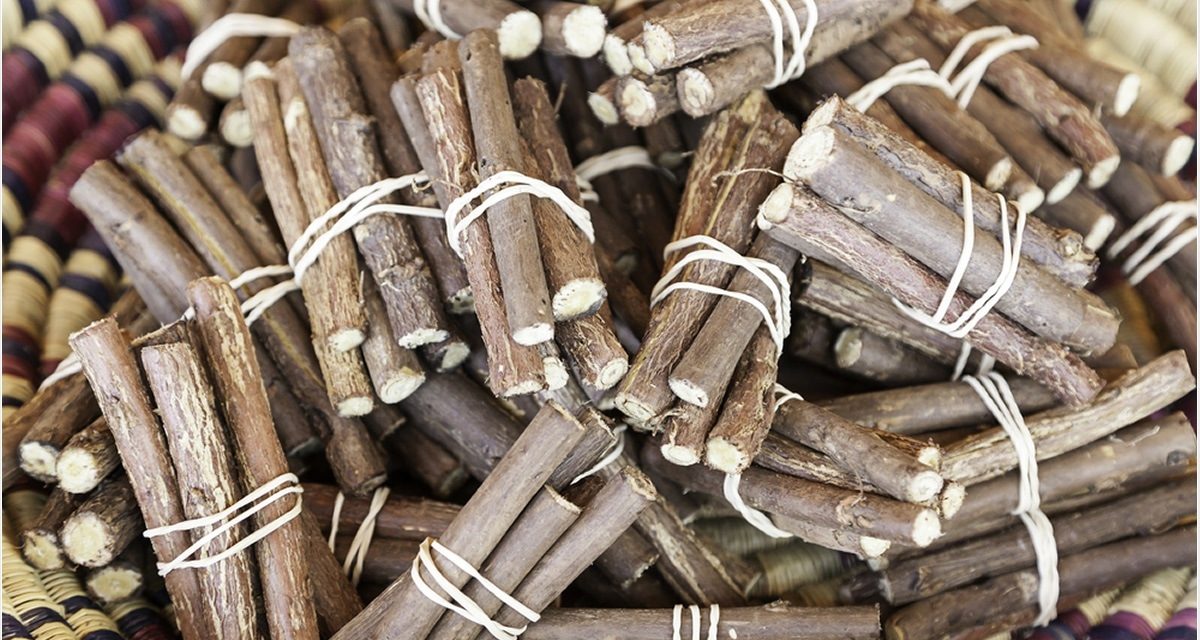Antiviral and Antitumor Activity of Licorice Root Extracts
Kunihiko Fukuchi, Noriyuki Okudaira, Kazunori Adachi, Reina Odai-Ide, Shigeru Watanabe, Hirokazu Ohno, Masaji Yamamoto, Taisei Kanamoto, Shigemi Terakubo, Hideki Nakashima, Yoshihiro Uesawa, Hajime Kagaya, Hiroshi Sakagami
Because there is a search to derive antiviral and anti-tumor substances from natural resources, an investigation was done into the antiviral and anti-tumor activities of licorice root extract. The method included a ratio of 50% cytotoxic concentration to 50% effective concentration against human immunodeficiency virus (HIV) or herpes simplex virus (HSV)-infected cells. The experiment found that alkaline extract of licorice rot had higher anti-HIV activity than did water extracts. However, especially found in the flavonoid-rich fraction, water extract had higher anti-HSV activity than did the alkaline extract. In conclusion, the study suggested that alkaline and water extracts of licorice root apply different mechanisms of actions against HIV and HSV.
Antiviral effects of Glycyrrhiza species
Cristina Fiore, Michael Eisenhut, Rea Krausse, Eugenio Ragazzi, Donatella Pellati, Decio Armanini, and Jens Bielenberg
In ancient manuscripts from China, Greece, and India, mentions of the Glycyrrhiza species and its uses for symptoms of viral respiratory tract infections and hepatitis are included. Confirmed in randomized controlled trials, It was found that the Glycrrhiza glabra devired compound glycrrrhizin and its derivatives reduced hepatocellular damage in chronic hepatitis B and C. Also, the risk of hepatocellular carcinoma was reduced in hepatitis C virus-induced cirrhosis. In animals studies, found in the herpes simplex virus encephalitis and the influenza A virus pneumonia, there was a reduction of mortality and viral activity. In vitro studies detected antiviral activity against SARS and HIV-1 linked coronavirus, arboviruses, respiratory syncytial virus, vaccinia virus, and vesicular stomatitis virus.
Effects of Licorice on clinical symptoms and laboratory signs in moderately ill patients with pneumonia from COVID-19: A structured summary of a study protocol for a randomized controlled trial
Omid Safa, Mehdi Hassani-Azad, Mehdi Farashahinejad, Parivash Davoodian, Habib Dadvand, Soheil Hassanipour, and Mohammad Fathalipour
Researcher investigated the effects of licorice poor extract compared to the usual therapeutic regimen n clinical symptoms and laboratory signs in confirmed COVID-19 patients that are moderately ill. The trial was a single-center, open-label, randomized, clinical trial with parallel-group design, and both male and female patients with 18 or younger years of age were admitted for treatment at the Shalid Mohammadi Hospital, Hormozgan University of Medical Sciences, Bandar Abbas. Within seven days of randomization, the recovery rate of clinical symptoms such as fever, tiredness, dry cough, and preclinical features were evaluated as primary outcomes. Evaluated at secondary outcomes were time to the improvement of clinical, paraclinical features, length of stay in a hospital, and the incidence of adverse reactions.
Glycyrrhizin in licorice root neutralizes SARS-CoV-2 in vitro by inhibiting the main protease Mpro
Susha Cheriyedath, M.Sc
A recent in vitro study by researchers from Germany examined aqueous licorice root extract for its neutralizing activity against SARS-CoV-2. In the investigation, the primary active ingredient in the root, glycyrrhizin, was revealed and identified the underlying mechanism of viral neutralization. Cytotoxicity was confirmed at 4 different time points. The licorice root extract demonstrated neutralizing effects even at subtonic concentrations which are lower than the typical consuming dilution. Antiviral activity of glycyrrhizic acid against SARS-CoV-2 was studied in-silico. Researchers concluded that glycyrrhizin neutralizes the virus by a mechanism that is different from inhibition of the human transmembrane serine protease. It was also found that glycyrrhizin effectively neutralizes SARS-CoV-2 by inhibiting the viral main protease Mpro. These findings indicate that glycryyhizin as a promising antiviral compound for the treatment of COVID-19.
Glycyrrhizin: An alternative drug for the treatment of COVID-19 infection and the associated respiratory syndrome?
Christian Bailly and Gérard Vergoten
In search of an effective treatment for COVD-19, researchers analyzed the antiviral potential of the natural product glycyrrhizic acid (GLR). GLR has demonstrated activities against different viruses such a SARS and is known for its anti-inflammatory capabilities on both cytoplasmic and membrane effects. At the membrane level, for the importance for entry of coronavirus cells, Glycyrrhizic acid induces cholesterol-dependent disorganization of lipid rafts. At the intracellular and circulating levels, blocking the distressing functions of the high mobility group box 1 protein (HMGB1), GLR traps the HMGB1. The cytoplasmic and membrane effects make GLR an excellent candidate to tested against the SARS-CoV-2 coronavirus, and the anti-inflammatory activity of GLR could be useful to reduce the respiratory duress.
Licorice Root: Potent Antiviral, Antimicrobial and Anti-fungal
Dr. Scott Tyler, BSc, ND.
Throughout different cultures, the use of licorice has been well-documented for its exceptional antiviral, antibacterial, and anti-fungal properties. The classes of molecules identified in licorice root extract include 20 triterpenoids and about 300 flavonoids. Triterpenoids have excellent bioactive diversity and structure; and flavonoids, found in fruits, vegetables, bark, etc, are well-known for their antioxidant, anti-inflammatory, anti-mutagenic, and anti-carcinogenic properties, as well as their role in modulating key cellular enzyme functions. There are many compounds in licorice root that serve medicinal purposes, but the most active components, triterpenoids glycyrrhizin and glycyrrhizic acid, appear to possess the most antiviral and antimicrobial activities. In fact, researchers have found that glycyrrhizin may inhibit hepatitis C virus and have a membrane-stabilizing effect and reduced cell membrane fluidity. Because of this, it is thought that licorice root stops the spread of hepatitis C virus. Glycyrrhizin has been reported to successfully treat, not just hepatitis C virus, but also herpes simplex type 1, varicella-zoster virus, hepatitis A virus, hepatitis B virus, human immunodeficiency virus, severe acute respiratory syndrome, Epstein-Barr virus, human cytomegalovirus, and influenza virus. Previous and current research on licorice root extract has demonstrated its antiviral capabilities, making it a promising effective natural therapeutic.
The antiviral and antimicrobial activities of licorice, a widely-used Chinese herb
Liqiang Wang, Rui Yang, Bochuan Yuan, Ying Liu, and Chunsheng Liu
For centuries, licorice is an herb that has been used in traditional Chinese medicine, and recent studies have reported that the 20 triterpenoids and newly 300 flavonoids possess many pharmacological activities, including antiviral, antimicrobial, anti-inflammatory, anti-tumor, and more. Among these activities, antiviral and antimicrobial have been the most reported. Found in licorice root are two major active components glyhcyrrhizin (GL), and glycrrhetinic acid that possess high antiviral activity. These two components can weaken virus activities by inhibiting virus gene replication and expression, thus reducing HMGB1 binding to DNA.
The potential of glycyrrhizin and licorice extract in combating COVID-19 and associated conditions
Adel A. Gomaa , Yasmin A.Abdel-Wadood
In China, to fight against the SARS-CoV-2 virus, recent studies have reported that glycryrrhizin and licorice extract are present in most traditional Chinese medicine formulas because data shows that licorice extract possesses various beneficial activities. Research from the years 1979 to October 2020 were studied to demonstrate the effects, safety and use of glycyrrhizin and licorice extract to combat viral and bacterial infections and inflammatory disorders of the lung both in vitro and in vivo. Out of these studies, 50 studies have demonstrated the antiviral activity of glycyrrhizin and licorice extract; and 25 studies reveal evidence for the protective effect of glycyrrhizin and licorice extract against cardiovascular disorders inflammation-induced lung injury. More randomized trails are required to collect more precise information.

